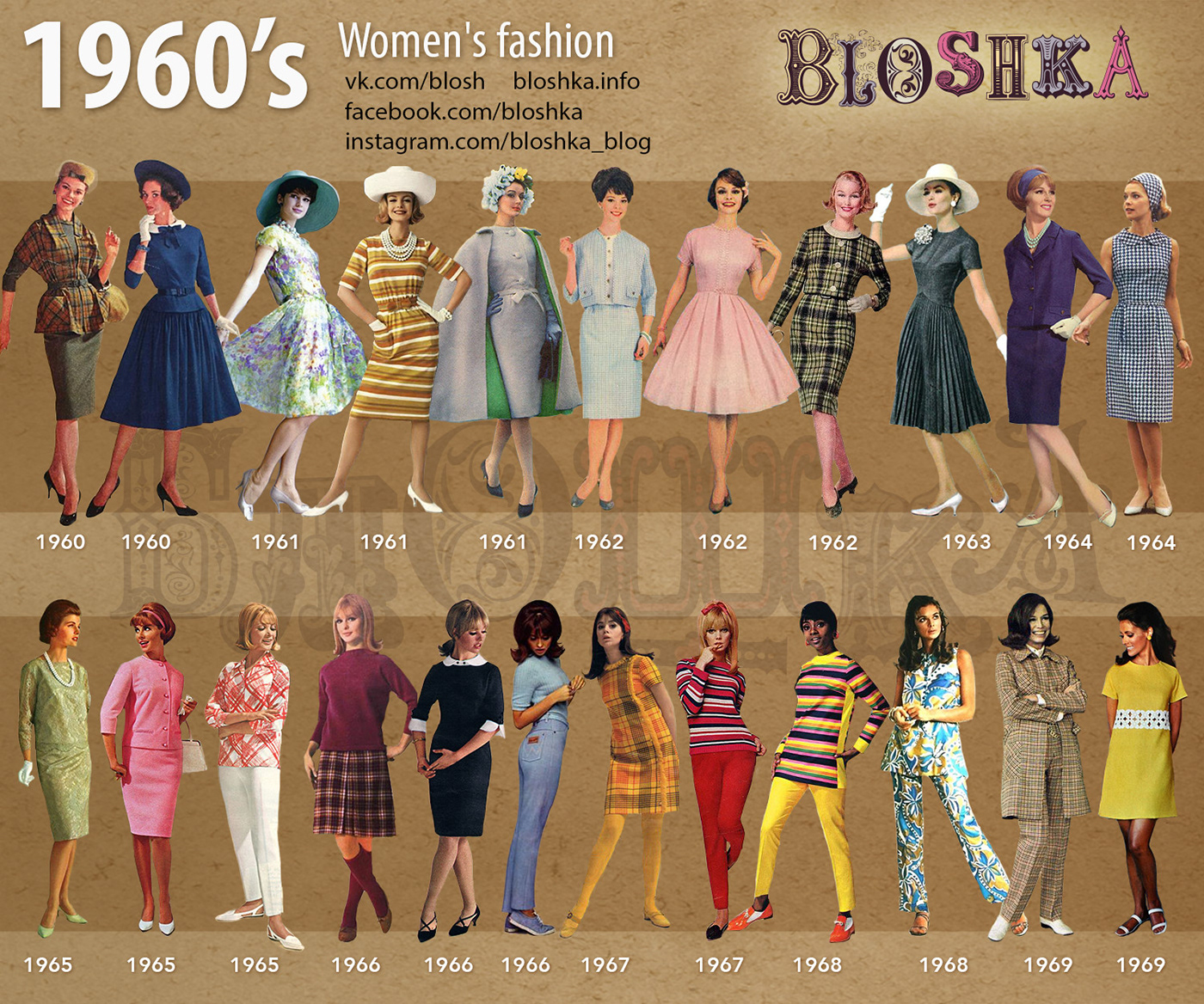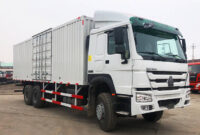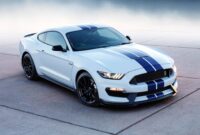1960s Ford Trucks For Sale: A Comprehensive Buyer’s Guide pickup.truckstrend.com
In the vast landscape of classic American vehicles, 1960s Ford trucks hold a special, enduring appeal. More than just utilitarian workhorses, these iconic pickups and SUVs have transcended their original purpose to become highly sought-after collector’s items, project vehicles, and even stylish daily drivers. The allure lies in their timeless design, rugged reliability, mechanical simplicity, and the nostalgic connection they forge with a bygone era of American ingenuity and craftsmanship.
For enthusiasts and aspiring owners, navigating the market for 1960s Ford trucks for sale can be both exciting and challenging. This comprehensive guide will delve into what makes these vehicles so desirable, what to look for when buying, where to find them, and how to make an informed purchase that brings the dream of owning a piece of automotive history to life.
1960s Ford Trucks For Sale: A Comprehensive Buyer’s Guide
The Enduring Appeal of 1960s Ford Trucks
The 1960s marked a transformative decade for Ford’s truck division. The introduction of new body styles, improved powertrains, and an emphasis on comfort and versatility broadened their appeal beyond just commercial use. This era produced vehicles that perfectly blended form and function, embodying the spirit of American resilience and innovation.
Several factors contribute to their continued popularity today:
- Timeless Aesthetics: From the "Unibody" F-Series of the early ’60s to the more refined lines of the Fifth Generation, and the rugged charm of the early Bronco, these trucks possess a classic, unmistakable presence. Their clean lines and distinctive grilles evoke a sense of Americana that modern vehicles often lack.
- Robust Construction: Built to withstand demanding work, 1960s Ford trucks were engineered with heavy-gauge steel and straightforward mechanicals, contributing to their remarkable longevity. Many examples still on the road today are testaments to their inherent durability.
- Mechanical Simplicity: Unlike modern vehicles laden with complex electronics, these trucks are relatively simple machines. This makes them more accessible for DIY enthusiasts to maintain, repair, and even upgrade, fostering a strong sense of ownership and connection.
- Customization Potential: Their straightforward design provides an excellent canvas for customization. Whether it’s a full restoration to factory specifications, a "restomod" with modern performance upgrades, or a unique hot rod build, the possibilities are virtually endless, allowing owners to express their individual style.
- Nostalgia and Heritage: For many, these trucks represent a tangible link to childhood memories, family history, or a simpler time. They are more than just vehicles; they are rolling pieces of cultural heritage.

Key Models to Look For (1960-1969)
Ford’s truck lineup in the 1960s offered a diverse range of options, each with its unique character and appeal.
Ford F-Series (F-100, F-250, F-350)
The F-Series pickup was the undisputed king of Ford’s truck sales. The 1960s saw two distinct generations:
- Fourth Generation (1961-1966): This generation introduced the controversial "Unibody" F-Series (1961-1963), where the cab and bed were integrated into a single stamping. While innovative, it faced durability issues under heavy loads, leading Ford to revert to separate cab and bed designs in 1964. The later Fourth Gen trucks are known for their distinctive "slant-nose" front end and robust construction. Engines ranged from inline-sixes (223, 262, 240, 300 cu in) to V8s (292, 352, 390 cu in).
- Fifth Generation (1967-1972): The latter half of the 1960s saw the introduction of the iconic Fifth Generation F-Series (1967-1969 fall within the decade). These trucks featured a wider, lower, and more comfortable cab, a larger grille, and a more modern appearance. They quickly became immensely popular and are arguably the most sought-after F-Series trucks of the 1960s today. Engine options continued to expand, including the reliable 300 cu in I6 and a variety of FE-series V8s.
Ford Bronco (1966-1977)
Introduced in 1966, the First Generation Ford Bronco was Ford’s answer to the Jeep CJ and International Harvester Scout. Designed as a compact, rugged 4×4, it offered a short wheelbase, high ground clearance, and a no-nonsense approach to off-road capability. Early Broncos came with inline-six (170, 200 cu in) or small-block V8 (289, 302 cu in) engines. Their unique blend of utility, style, and off-road prowess has made them incredibly valuable and desirable today, particularly the earliest models.
Ford Econoline (1961-1967)
While not a traditional pickup, the first-generation Ford Econoline was a forward-control, compact utility vehicle available as a pickup, van, or passenger wagon. Its unique flat-nose design, with the engine positioned between the front seats, offered maximum cargo space in a small footprint. Though less conventional, the Econoline pickup has gained a cult following for its distinctive appearance and practical versatility.
What to Consider When Buying a 1960s Ford Truck
Purchasing a classic vehicle, especially one over 50 years old, requires careful consideration. Here’s what to scrutinize:
- Condition is King: This is the primary determinant of price and future investment.
- Rust: The biggest enemy. Check the frame rails, cab corners, floor pans, rocker panels, fender wells, bed floor, and tailgate. Surface rust is manageable, but extensive structural rust can be a deal-breaker or require costly repairs.
- Engine & Drivetrain: Listen for unusual noises, smoke from the exhaust, or fluid leaks. Check fluid levels and clarity. Test the transmission for smooth shifts. Ideally, get a compression test.
- Brakes & Suspension: Are the brakes firm and responsive? Does the truck pull to one side? Check for worn bushings, shocks, and springs.
- Electrical System: Test all lights, gauges, wipers, and horn. Old wiring can be a fire hazard.
- Interior: Assess the seat upholstery, dash pad, door panels, and headliner. These are often easier to replace but indicate overall care.
- Originality vs. Customization: Decide what you’re looking for.
- Original/Stock: Commands higher prices, especially if well-preserved. Easier to value.
- Restomod: Classic looks with modern performance (engine swaps, power steering, disc brakes, A/C). Can be very enjoyable but harder to value consistently.
- Project Vehicle: Requires significant work. Be realistic about your skills, time, and budget.
- Intended Use: Will it be a daily driver, a weekend cruiser, a show truck, or a dedicated workhorse? This influences the level of restoration or modification needed.
- Documentation: A clear title is essential. Look for maintenance records, original manuals, or any history that confirms its provenance.
- Pre-Purchase Inspection (PPI): If possible, have a qualified mechanic specializing in classic vehicles inspect the truck before purchase, especially if buying long-distance. This can save you thousands in unexpected repairs.
Where to Find 1960s Ford Trucks For Sale
The market for classic trucks is vibrant, offering several avenues for potential buyers:
- Online Marketplaces:
- eBay Motors: A vast inventory, but requires careful vetting of sellers.
- Craigslist/Facebook Marketplace: Great for local finds, often at more accessible prices, but be wary of scams.
- Specialty Classic Car Sites: Bring a Trailer (curated auctions, higher-end vehicles), Hemmings Motor News, ClassicCars.com, Autotrader Classics. These sites often have more detailed listings and higher-quality vehicles.
- Classic Car/Truck Dealers: Reputable dealers often have thoroughly inspected and sometimes restored vehicles, offering a higher level of confidence, though prices will reflect this.
- Auctions: Mecum Auctions, Barrett-Jackson, and local auto auctions can be exciting but require quick decision-making and often come with buyer’s premiums. Research thoroughly beforehand.
- Forums & Clubs: Online forums dedicated to 1960s Ford trucks (e.g., Ford-Trucks.com, EarlyBronco.com) and local classic car clubs are excellent resources for leads, advice, and sometimes even direct sales from fellow enthusiasts.
- Word of Mouth: Sometimes, the best deals are found through friends, family, or local car shows.
Navigating the Purchase Process
- Set a Realistic Budget: Beyond the purchase price, factor in potential repairs, upgrades, insurance, registration, and transportation costs.
- Do Your Homework: Research specific models, common issues, and market values for different conditions. Look at completed sales on auction sites to get a sense of current prices.
- Ask Detailed Questions: Don’t hesitate to ask the seller about the truck’s history, maintenance, any known issues, and why they are selling. Request additional photos or videos, especially of problem areas.
- Inspect Thoroughly (or Have it Inspected): Follow the "What to Consider" guidelines. If possible, see the truck in person.
- Test Drive: Listen for engine and transmission sounds, check steering, brakes, and suspension. Pay attention to how the vehicle handles.
- Negotiate: Most classic vehicle prices are negotiable. Be polite but firm, backing up your offer with facts from your inspection.
- Secure Funding & Insurance: Have your financing pre-approved if needed. Research classic car insurance providers (e.g., Hagerty, Grundy) as standard auto insurance may not adequately cover a classic.
- Arrange Transportation: Unless you plan to drive it home, factor in the cost of professional vehicle transport.
Common Challenges and Solutions
- Rust: The most pervasive issue. Solutions range from patch panels and rust converters for minor issues to full panel replacement and even frame-off restorations for severe cases. Finding a skilled body shop is crucial.
- Parts Availability: Generally good for F-Series trucks due to their popularity. Aftermarket companies (e.g., LMC Truck, Dennis Carpenter) reproduce many components. Online communities, junkyards, and swap meets are also great sources. Bronco parts can be more expensive and specialized.
- Mechanical Issues: While simple, old engines and transmissions can have wear and tear. Finding a mechanic experienced with vintage vehicles is key. Many owners learn to do basic maintenance themselves with the help of service manuals and online tutorials.
- Budget Creep: Restoration costs can quickly spiral. Set a realistic budget from the start and try to stick to it. Prioritize essential repairs first.
- Titling and Registration: Ensure the seller has a clear, transferable title. Some states have specific rules for registering antique or classic vehicles.
Tips for Restoration and Maintenance
- Start Simple: If you’re new to classic vehicle ownership, don’t jump into a full frame-off restoration immediately. Enjoy the truck as a "driver" while addressing smaller issues.
- Join a Community: Online forums, local clubs, and social media groups are invaluable resources for advice, parts, and camaraderie.
- Invest in Tools & Manuals: A good set of hand tools, a factory service manual, and a parts catalog will pay for themselves many times over.
- Regular Maintenance is Key: Even a fully restored truck needs consistent care. Check fluids, belts, hoses, and brakes regularly.
- Enjoy the Process: Owning a classic 1960s Ford truck is a journey, not just a destination. Embrace the challenges and celebrate the triumphs.
1960s Ford Trucks For Sale: Estimated Price Guide
Please note: These prices are highly variable based on geographical location, specific model year, engine/transmission, originality, documentation, and market demand. This table provides a general estimated range for common models.
| Model & Year Range | Condition: Project/Restorable (USD) | Condition: Driver Quality (USD) | Condition: Fully Restored/Show Quality (USD) |
|---|---|---|---|
| Ford F-100 (1961-1966) | $3,000 – $8,000 | $10,000 – $25,000 | $30,000 – $60,000+ |
| Ford F-100 (1967-1969) | $4,000 – $10,000 | $12,000 – $30,000 | $35,000 – $75,000+ |
| Ford F-250/F-350 (1961-1969) | $2,500 – $7,000 | $8,000 – $20,000 | $25,000 – $50,000+ |
| Ford Bronco (1966-1969) | $15,000 – $30,000 | $40,000 – $75,000 | $80,000 – $200,000+ |
| Ford Econoline Pickup (1961-1967) | $5,000 – $12,000 | $15,000 – $35,000 | $40,000 – $80,000+ |
Note: "Project/Restorable" implies significant work needed (rust, mechanical issues). "Driver Quality" means runs and drives reliably, may have cosmetic flaws. "Fully Restored/Show Quality" is near-perfect condition, often with modern upgrades.
Frequently Asked Questions (FAQ)
Q1: Are parts hard to find for 1960s Ford trucks?
A1: Generally, no, especially for the F-Series. Due to their popularity, many aftermarket companies reproduce common parts. Specialty or trim pieces can sometimes be harder to find, but online communities and junkyards are good resources. Bronco parts can be more expensive but are also widely available.
Q2: Can a 1960s Ford truck be a reliable daily driver?
A2: With proper maintenance and potentially some modern upgrades (e.g., disc brakes, electronic ignition, power steering), many 1960s Ford trucks can be reliable daily drivers. However, they will require more consistent attention than a modern vehicle and may lack modern safety features or creature comforts like air conditioning (unless added).
Q3: Which 1960s Ford truck model is best for a first-time classic truck owner?
A3: The Ford F-100 from the Fifth Generation (1967-1969) is often recommended. They are relatively abundant, parts are plentiful, and their design is highly desirable, making them a solid entry point.
Q4: How much does it cost to restore a 1960s Ford truck?
A4: Restoration costs vary wildly depending on the truck’s initial condition, the desired level of restoration (driver vs. show quality), and whether you do the work yourself or pay a shop. A full, professional, frame-off restoration can easily exceed the truck’s purchase price, often ranging from $30,000 to over $100,000. Minor mechanical and cosmetic improvements can be done for a few thousand dollars.
Q5: Do 1960s Ford trucks hold their value or appreciate?
A5: Well-maintained, original, or professionally restored 1960s Ford trucks, especially desirable models like the F-100 and Bronco, tend to hold or appreciate in value. Project vehicles may not appreciate as much unless significant work is invested. Market trends can influence values, but their classic status generally ensures long-term appeal.
Q6: What about engine swaps and modernizing these trucks?
A6: Engine swaps (e.g., modern Ford Coyote V8s, LS swaps) are very popular for creating "restomods." These conversions can significantly improve performance, fuel economy, and reliability. Upgrading to power steering, disc brakes, and modern air conditioning are also common modifications that enhance the driving experience without sacrificing the classic aesthetic.
Conclusion
The market for 1960s Ford trucks for sale is rich with opportunities for enthusiasts seeking a slice of automotive history. Whether you dream of a meticulously restored showpiece, a reliable daily driver with vintage charm, or a challenging project to hone your mechanical skills, these trucks offer a rewarding ownership experience. By understanding the different models, knowing what to look for during inspection, and approaching the purchase process with careful research and realistic expectations, you can find the perfect 1960s Ford truck to call your own. The journey of owning, driving, and perhaps restoring one of these iconic vehicles is a testament to their enduring legacy and a truly unique way to connect with the past.


